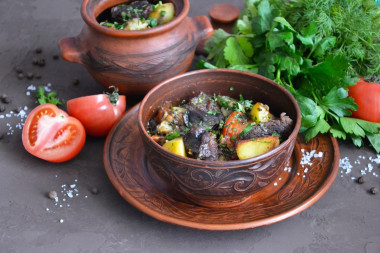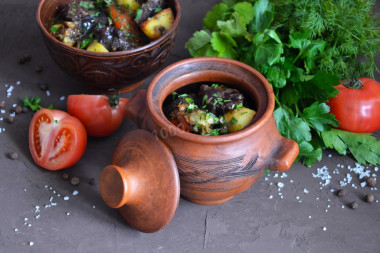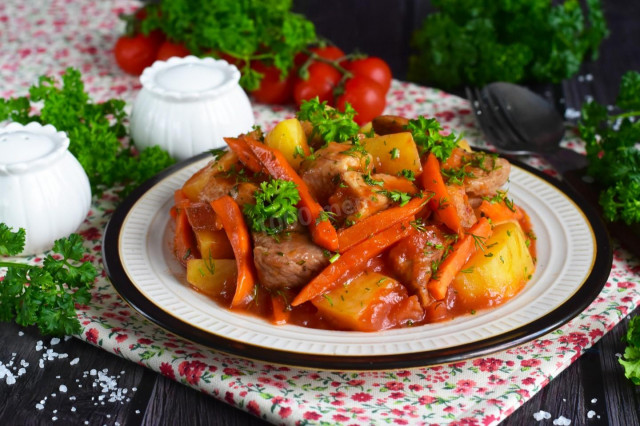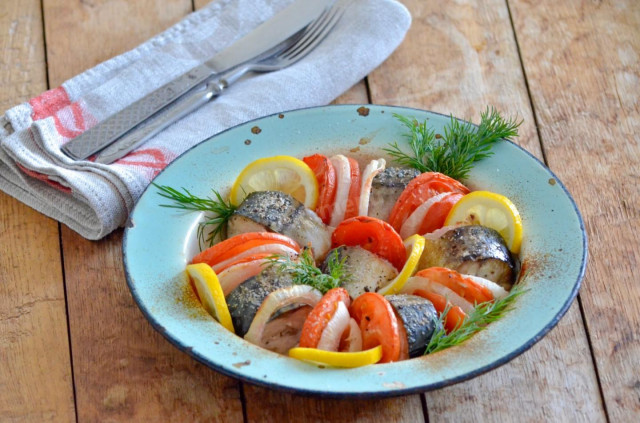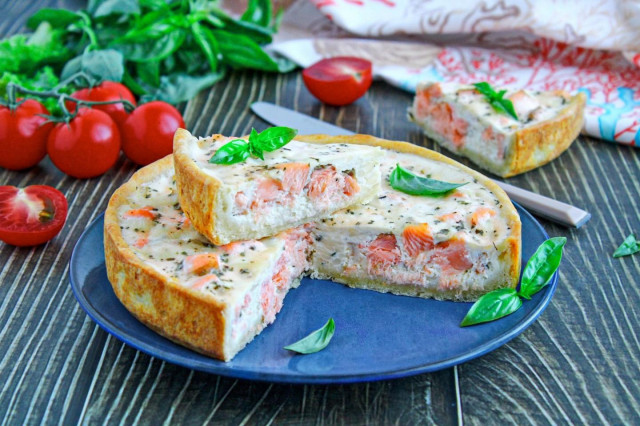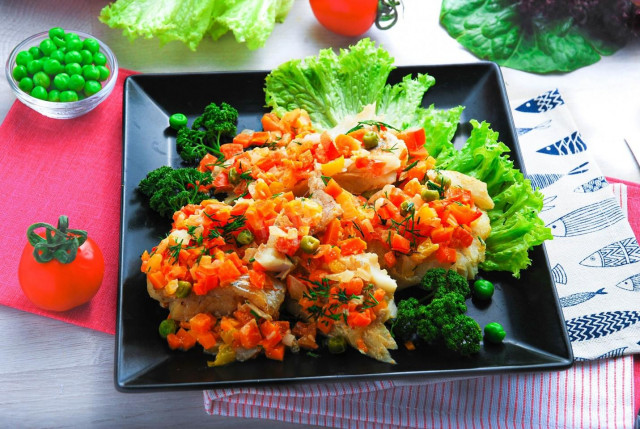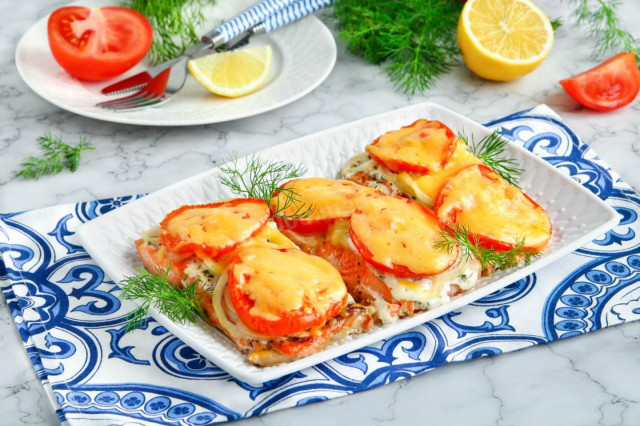Composition / ingredients
Step-by-step cooking
Step 1:
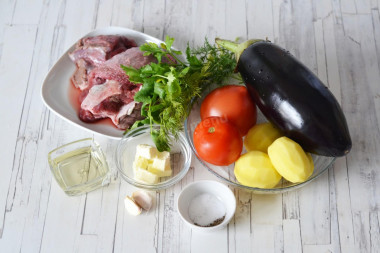
Prepare all the necessary ingredients. For chanakhi, beef, pork or lamb is usually used on the bone or only the pulp. Tomatoes are better to take strong ones so that they retain their shape during baking. The same goes for eggplant. If the eggplant is large, one is enough, if it is small, then you need to take 2-3 pieces.
Step 2:
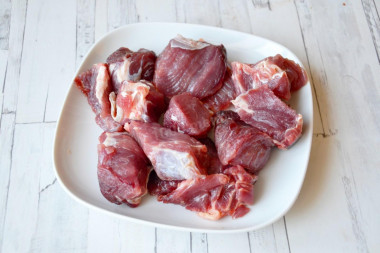
How to cut meat? Wash the meat, dry it and cut into medium pieces. If you cut it finely, it will dry out quickly and become stiff, and if it is large, on the contrary, it will take longer to cook. Therefore, the average size of the pieces is just right.
Step 3:
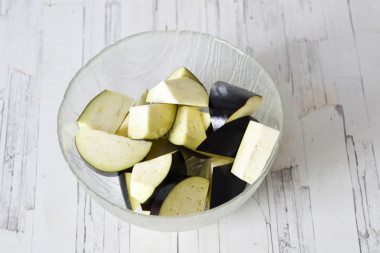
Wash the eggplants, dry them and also cut them into medium pieces. During the roasting process, moisture will leave them and they will decrease in size. Finely chopped eggplants will spread out during baking. Sprinkle the eggplants with salt, stir and leave for 20 minutes to beat off the bitterness. During this time, they can darken and highlight the juice that will need to be drained. Then rinse the eggplants from the salt and lightly squeeze out excess moisture.
Step 4:
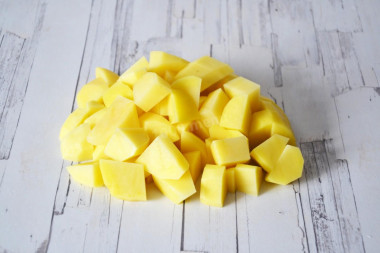
How to cut potatoes? Peel the potatoes and cut them into medium pieces. So it will keep its shape when baking and it will be convenient to eat.
Step 5:
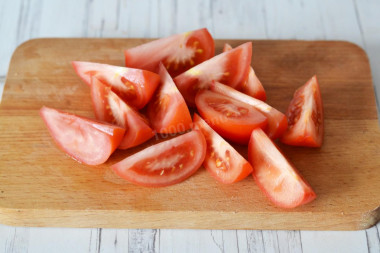
Wash the tomatoes, dry them and cut them into slices. Tomatoes are better to take dense. If the tomatoes are soft, they will boil a lot when baking. Drain the juice released when slicing tomatoes. Strong tomatoes practically do not give juice.
Step 6:
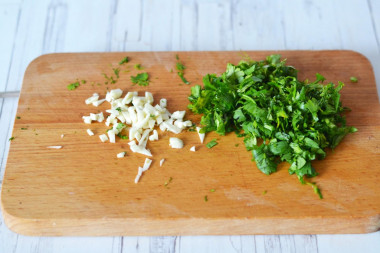
Peel and finely chop the garlic or pass it through a press. Rinse the greens with water, shake off the moisture and chop finely. If desired, you can take more greens.
Step 7:

Heat a little vegetable oil in a frying pan and fry the eggplants, stirring, over high heat until golden brown. If the eggplants are not squeezed out beforehand (step 3), then when they come into contact with hot oil, they will start shooting and you will have to wash everything around. Remove the finished eggplants from the pan and transfer to a plate.
Step 8:
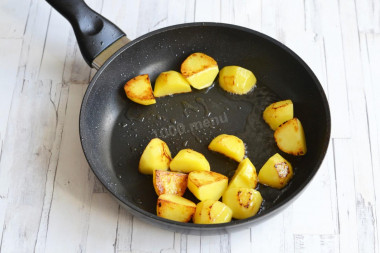
If there is a little fat left in the pan after the eggplant, then you do not need to add vegetable oil again. Lay out the potatoes and also fry over high heat until golden brown. Inside, the potatoes will remain tough, but during baking in pots, they will reach the desired readiness. Transfer the potatoes to a plate.
Step 9:

Heat the remaining vegetable oil in a frying pan and fry the meat over high heat to quickly seal all the meat juices until golden brown. The meat is fried the very last, because after it dark fat remains in the pan, which can then go to vegetables. In order not to wash the pan after the meat, it is better to fry it last.
Step 10:

In pots (ceramic or clay), first put the meat in one layer, add a small piece of butter on top. The oil will provide the dish with a soft creamy taste and fat, which will protect meat and vegetables from burning. Lightly season the meat and each subsequent layer with salt and pepper. You can cook vats both in batch pots and in one large pot.
Step 11:

Next, put the eggplant, then the fried potatoes and another piece of butter.
Step 12:

Place tomato slices on top.
Step 13:

Sprinkle everything with chopped herbs and garlic.
Step 14:
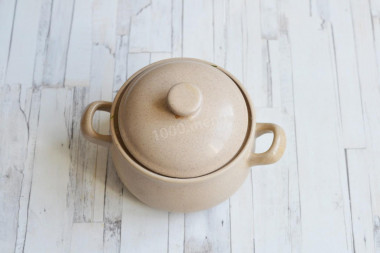
Cover the pots with lids and put them in a preheated 180 ° C oven for 1 hour. It may take longer depending on the hardness of the meat, as well as the characteristics of the oven. Therefore, the baking time can be increased to 1.5 hours. During baking, enough juice is released from meat and vegetables, but if necessary, you can add 50-70 ml of water or broth to the pots. This is especially true if the extinguishing process is longer than 1 hour.
Step 15:
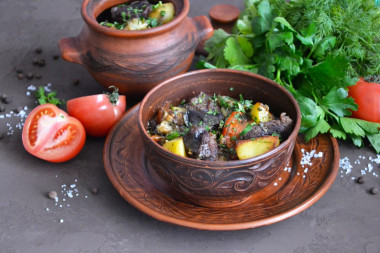
Bon appetit!
When cooking dishes in the oven, it is very important to know exactly how your oven works. After all, all ovens have their own characteristics and everything affects it, starting from whether it is gas or electric, large or small, a full-fledged oven with 4-5 tiers or a small oven (they will warm up at different speeds and intensity).
Moreover, the heating temperature may be incorrectly transmitted in old ovens, and the oven itself may warm up unevenly and not correspond to the set temperature. Therefore, dishes after the time specified in the recipe can either burn (if the temperature is higher than the desired one) or vice versa be unprepared (if the temperature is lower).
I cook everything in a modern electric oven at an average level (if the level needs to be made higher or lower, this is additionally indicated in the recipe). Therefore, all calculations on time and temperature are given in accordance with my oven.
But every housewife should know the specifics of her oven and focus on it and, if necessary, adjust the heating time and/or temperature. Only then will dishes prepared according to someone else's recipes from any source be obtained as needed.
Useful
article with necessary information about ovens
.
Caloric content of the products possible in the composition of the dish
- Ripe potatoes - 80 kcal/100g
- Baked potatoes - 70 kcal/100g
- Mashed potatoes - 380 kcal/100g
- Boiled potatoes - 82 kcal/100g
- Potatoes in uniform - 74 kcal/100g
- Fried potatoes - 192 kcal/100g
- Tomatoes - 23 kcal/100g
- Lean mutton - 169 kcal/100g
- Fat mutton - 225 kcal/100g
- Lamb - brisket - 533 kcal/100g
- Mutton - ham - 232 kcal/100g
- Lamb chop on a bone - 380 kcal/100g
- Lamb shoulder - 284 kcal/100g
- Mutton - dorsal part - 459 kcal/100g
- Eggplant - 24 kcal/100g
- Garlic - 143 kcal/100g
- Ground black pepper - 255 kcal/100g
- Parsley greens - 45 kcal/100g
- Dill greens - 38 kcal/100g
- Butter 82% - 734 kcal/100g
- Amateur unsalted butter - 709 kcal/100g
- Unsalted peasant butter - 661 kcal/100g
- Peasant salted butter - 652 kcal/100g
- Melted butter - 869 kcal/100g
- Vegetable oil - 873 kcal/100g
- Salt - 0 kcal/100g
- Coriander greens - 25 kcal/100g


